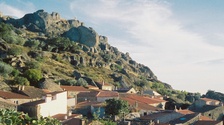Find English Teachers
manybuddies
Please help me with this poem
The following is a poem taken from a textbook.
내 마음
김동명
내 마음은 호수요
그대 노 저어 오오
나는 그대의 흰 그림자를 안고
옥같이 그대 뱃전에 부서지리다
내 마음은 촛불이오
그대 저 문을 닫아 주오
나는 그대의 비단 옷자락에 떨며
고요히 최후의 한 방울도 남김 없이 타오리라
내 마음은 나그네요
그대 피리를 불어 주오
나는 달 아래 귀를 기울이며
호젓이 나의 밤을 새이오리다
내 마음은 낙엽이오
잠깐 그대의 뜰에 머무르게 하오
이제 바람이 일면 나는 또 나그네같이
외로이 그대를 떠나리다
1. Is the 요 and 이오 in 호수요 and 춧불이오 the same 어미? Or is it 요/이요 being one set and 오/이오 being another?
2. What is the original form and grammar(s) associated with "타오리라"?
3. What is the original form and grammar(s) associated with "새이오리다"?
4. Please translate this line "나는 그대의 흰 그림자를 안고 옥같이 그대 뱃전에 부서지리다".
As usual, many many thanks to everyone who has helped.
Feb 22, 2019 4:36 PM
Answers · 4
1
It's an old poem (1937), so it uses a lot of old style phrasing.
1. 호수요 and 촛불이오 are both using 하오체 (a traditional medium formal conversational style) that is almost dead now (e.g. 가오, 나를 주오, 그이는 좋은 사람이오/이라오). 호수요 is a natural shortening of 호수이오, so the two are basically using the same ending (this 이오/요 is different from the modern -요 suffix).
2. 타오리라 = 타다(to burn) + (오) + -리라 (-ㄹ 것이다. will/would)..
-리라 is a formal and literary ending indicating future or intention (used mostly in writing).
오 in the middles is an old meaningless syllable showing respect and making the phrase "prettier". It's now only heard in period dramas (e.g. 오셨사옵니다 = 오셨습니다. 주무시고 계시옵니다 = 계십니다).
3. 새이오리다 = 새이다 (= 새우다) + (오) + -리다 (I will).
-리다 is another old ending form showing one's intention, equivalent to -겠어요 or -ㄹ 겁니다.
새이다 is a nonstandard variant of (밤을) 새우다 (stay up all night). 새우다 is commonly shortened to 새다, and then changed to 새이다, sometimes as its passive form, and sometimes just to make it sound smoother.
4. 나는 그대의 흰 그림자를 안고 옥같이 그대 뱃전에 부서지리다.
=> I will embrace your white shadow and break away like jade at your boat. (옥같이 = like jade(옥))
It's describing how the lakes water (which he likened his heart to) has the white shadowy figure of her reflected on it (그림자를 안다), while at the same time slapping and breaking away at her boat.
February 22, 2019
Still haven’t found your answers?
Write down your questions and let the native speakers help you!
manybuddies
Language Skills
Chinese (Mandarin), English, Korean
Learning Language
Korean
Articles You May Also Like

The Power of Storytelling in Business Communication
43 likes · 9 Comments

Back-to-School English: 15 Must-Know Phrases for the Classroom
31 likes · 6 Comments

Ten Tourist towns in Portugal that nobody remembers
59 likes · 23 Comments
More articles
